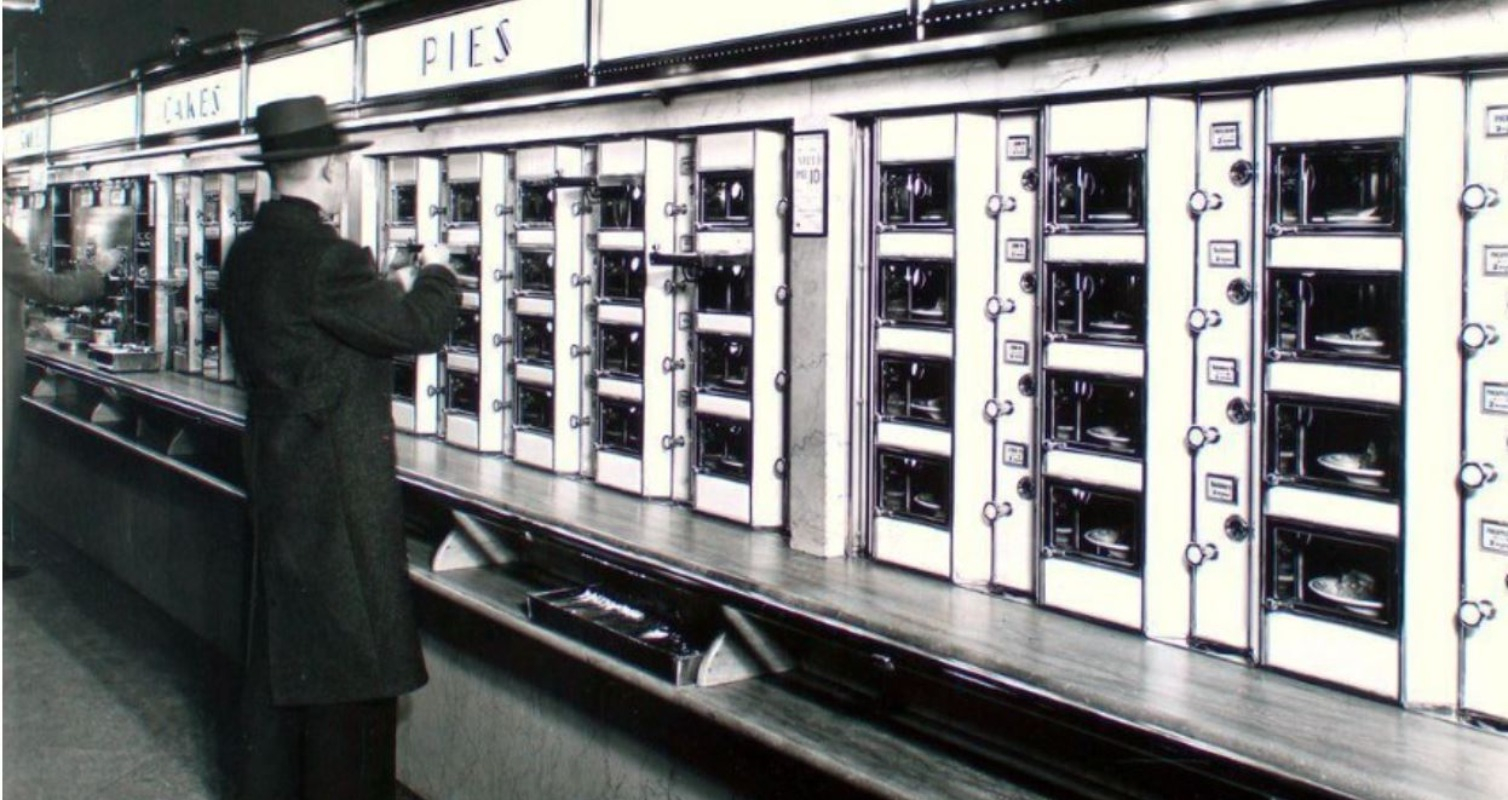Automat vending machines represent a fascinating chapter in the history of automated food service. The concept of the automat was pioneered by Horn & Hardart in the United States, with the first one opening in Philadelphia in 1902, before expanding to New York City and other locations. Here’s what makes automat vending machines particularly interesting:
Key Features and Historical Significance
- Self-Service Innovation: Automats were essentially large, wall-mounted vending machines where customers could choose from a variety of freshly prepared foods displayed behind small glass windows. Each item had its own slot, and customers inserted coins to unlock the door and retrieve their meal. This self-service model was revolutionary for its time.
- Variety of Foods: Unlike modern vending machines that mostly offer snacks and drinks, automats provided a wide range of hot meals, including main dishes, sides, desserts, and beverages. This made them a popular choice for quick, affordable lunches and dinners.
- Hygiene and Freshness: Foods were prepared in central kitchens and then distributed to automat locations. Behind each little window, there was a compartment where the food was kept warm or cold, ensuring it remained fresh until purchased. This approach to food service emphasized cleanliness and hygiene, which was quite innovative for the early 20th century.
- Cultural Impact: Automats became iconic symbols of urban life during the early to mid-20th century. They were especially popular among working-class individuals, offering an affordable dining option in bustling cities like New York. The automat also played a role in shaping American eating habits and expectations for convenience in food service.
- Decline and Legacy: By the 1970s, the popularity of automats began to decline due to various factors, including rising labor costs, changing tastes, and increased competition from fast-food chains. However, the legacy of the automat lives on as a precursor to modern concepts like fast-casual dining and advanced vending technology.
- Modern Revivals: In recent years, there has been renewed interest in automat-style vending machines, driven by advancements in automation technology and a growing demand for convenient, quick-service food options. Some contemporary versions use digital screens, smartphone integration, and robotic arms to prepare and dispense food, updating the original automat concept for the 21st century.
The automat is not just a historical curiosity but a testament to the ongoing human desire for efficient, accessible, and hygienic ways to obtain food. Its influence can be seen in today’s efforts to innovate food service through automation and technology.
